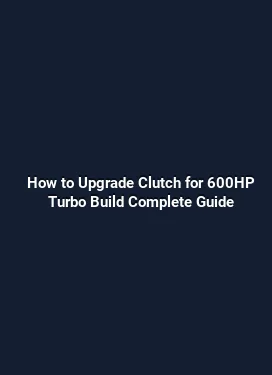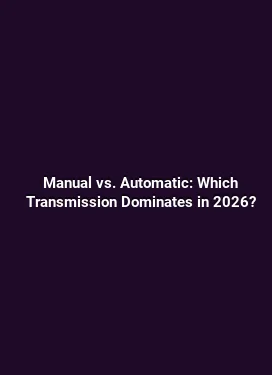Hydraulic Handbrake with Dual Caliper Setup for Drift Cars: A Comprehensive Installation Guide
Drifting relies on precise control of the rear axle, predictable brake bite, and reliable arresting power. A hydraulic handbrake paired with a dual caliper configuration can deliver consistent stability during tanuki slides, feints, and the all-important clutch-kick transitions. This in-depth guide covers the practical aspects of selecting components, fabricating mounts, routing hydraulic lines, bleeding the system, and tuning brake bias for drifting applications. It emphasizes real-world considerations, including clearance, heat management, reliability, and safety, while avoiding superficial descriptions. The information aims to help builders and racers implement a robust dual caliper hydraulic handbrake that integrates smoothly with a drift car’s transmission and drivetrain.
Dual Caliper Hydraulic Handbrake: System Architecture and Benefits

At the core of a dual caliper hydraulic handbrake system is the ability to apply braking force independently to the rear wheels, typically through two calipers acting on the same rotor or on two separate rotors per axle. This configuration provides a more linear and controllable lockup threshold, improved heat dissipation, and redundancy in case one circuit experiences a hydraulic fault. A well-designed dual caliper approach also allows for directional control during aggressive transitions, where a consistent rear brake feel is crucial for keeping the car in a controlled drift. When wiring, actuating, and bleeding are carried out correctly, the system becomes a predictable tool rather than a source of instability.
Key factors to consider include rotor compatibility, caliper mounting geometry, master cylinder capacity, line sizing, and the fluid’s resistance to heat and moisture. A thoughtful layout reduces pedal travel, ensures even pressure distribution, and minimizes the risk of wheel lockup that can unsettle the car’s balance mid-drift. In addition, durability under high g-forces, dirt ingress, and vibration must be addressed through robust mounting hardware and sealed fittings. The overall integration should preserve the car’s steering geometry and not interfere with other control systems during aggressive maneuvers.
Component Compatibility and Semantics of a Robust Setup

Choosing compatible components starts with identifying the rotor diameter and thickness, caliper mounting spacing, and the available master cylinder options. A common strategy is to pair dual calipers with a common rotor or two rotors on the rear axle, each caliper actuated by a shared hydraulic line routed through a distribution block. This arrangement yields balanced clamping force and reduces the risk of uneven wear across the drums or discs. The hydraulic routing should minimize hose length, eliminate sharp bends near heat sources, and avoid interference with suspension travel and steering input. When selecting hoses and fittings, use components rated for high-temperature environments and automotive fluids to prevent swelling, leakage, or hose failure under extreme drift conditions.
Choosing Components for Drift Applications
Component selection begins with an assessment of the drift car’s power, suspension geometry, and the intended track conditions. The dual caliper setup often uses two lightweight, high-strength calipers mounted around a rotor that is optimized for heat dissipation. The master cylinder must provide adequate stroke and pressure to couple seamlessly with both calipers at peak lateral g-forces. A dual-master approach can be employed, or a single master cylinder feeding a distribution valve that directs pressure to each caliper. In either case, it is crucial to specify hose end fittings, banjo bolts, and crush washers that match the hydraulic system’s port sizes and thread types to prevent leaks and ensure repeatable bleeding cycles.
Radial seals, pistons, and bore sizes influence pedal feel and bite. Pistons with slightly different areas can be selected to tune hydraulic balance between the left and right rear calipers, allowing for subtle bias adjustments while driving. It’s important to verify piston tolerances and ensure that the caliper bodies heat-induced expansion does not cause binding at the rotor. Consider rotor thickness and venting design to handle repeated braking under high temperatures. A compact, drift-focused setup often benefits from a modular distribution block and a compact reservoir that keeps fluid a safe distance from heat sources under long sessions.
Practical Selection Guide
- Calipers: Look for lightweight, corrosion-resistant bodies with compatible piston sizes and secure mounting points. Ensure they align with rotor diameter and hub spacing.
- Rotors: Prefer vented or slotted rotors with adequate heat capacity. Ensure rotor runout is minimal to avoid uneven wear and chatter during slides.
- Master Cylinder: Choose a unit with sufficient volume and a pressure curve suitable for the calipers. A tandem master cylinder can provide balanced pressure to dual circuits.
- Hydraulic Lines: Use PTFE or reinforced rubber lines rated for high temperatures. Route away from exhausts and moving components, with protection against chafing.
- Reservoir and Plumbing: Maintain clear fluid levels and choose a reservoir size that accommodates expansion under heat. Include venting to prevent air entrapment.
Mounting and Fabrication Considerations
A professionally executed mounting solution is critical for reliability and safety. The goal is to create rigid interfaces that resist fatigue, with attention to alignment, rotor clearance, and pedal geometry. Start with precise measurements of rear hub spacing, caliper mounting holes, and rotor thickness. Fabrication often requires custom brackets or adapter plates that maintain proper caliper alignment relative to the rotor face. Use high-tensile fasteners and lock nuts, and apply thread-locking compounds on critical hardware to withstand vibrations generated by aggressive drifting.
Brake line routing should prioritize short, straight paths where possible. Avoid routing lines through the cabin or near moving steering components. If lines must pass near a sway bar or control arms, protect them with conduit or shear plates to prevent abrasion. Heat shielding is essential in proximity to the exhaust or turbo manifold, as brake lines can degrade when exposed to prolonged high temperatures. When mounting dual calipers on a single rotor, ensure even spacing and alignment so that both pistons engage the rotor uniformly, delivering consistent clamping force when the handbrake is pulled hard.
Mounting Techniques for Dual Calipers
Integrating dual calipers typically involves either two calipers clamping opposite sides of a hollow rotor or two separate calipers clamping distinct faces of a single rotor. In either arrangement, symmetry is critical. The mounting brackets should provide sufficient thread engagement for vibration resistance, with countersunk bolts to prevent protrusion into the brake pad area. If clearance is tight with the wheel and tire package, consider offsetting the caliper slightly or using thin, high-strength washers to achieve the necessary alignment without sacrificing stability.
Hydraulic Line Routing and Fittings
Reliable line routing ensures consistent pressure delivery and minimizes air ingress. Start by planning a route from the master cylinder or distribution block to the rear calipers that minimizes hose length while maintaining a short path to the bleed point. Use stiff hoses with minimal expansion to preserve pedal feel during high-g maneuvers. Fittings should be impeccably tight but not overly torqued, as overtightening can deform ports and cause leaks. Crimped or threaded fittings must be chosen to match the caliper inlets and the master cylinder ports.
Bleed procedures are integral to a successful setup. After installation, bleed the system to remove air, then perform a dynamic bleed by activating the handbrake repeatedly to push any trapped air toward the reservoir. This technique helps ensure a solid pedal and predictable lockup threshold. A clear, bubble-free hydraulic fluid line is a strong indicator of a properly bled system. Regular inspection of lines for cracks or swelling is essential, given the harsh environment drift cars operate in, including surface water, dust, and heat exposure.
Line Sizing and Pressure Management
Line sizing impacts how quickly the system responds to handbrake input and how much pressure is delivered to each caliper. For most drift applications, 3/16-inch to 1/4-inch lines strike a balance between stiffness and flexibility. In dual caliper configurations, ensure the line network maintains equal pressure distribution. Consider a distribution valve or a dedicated line to each caliper if required to maintain consistent bite across both sides, especially during transitional handling at high slip angles.
Master Cylinder, Fluid Management, and Bias Control
The master cylinder acts as the heart of the hydraulic handbrake system. When dual circuits are used, a twin master or a master with a distribution manifold can deliver even pressure to both calipers. Monitoring fluid levels and selecting a fluid with a high boiling point reduces the risk of vapor lock during long sessions. Regularly check the fluid for contamination or color change, which can indicate internal wear or moisture absorption. The aim is to maintain a stable hydraulic system under repeated heating and cooling cycles common in drift practice.
Brake bias management is central to translating hydraulic input into predictable rear-wheel behavior. In practice, small adjustments to line routing, caliper bore sizes, or pads can shift the balance. The goal is to achieve a controlled rear-end response: enough bite to initiate angle without excessive lockup or instability when transitioning. Track testing under controlled conditions is essential to dial in the precise bias that suits the driver’s style and the car’s weight distribution.
Bleeding, Testing, and Safety Protocols
Bleeding is not a one-and-done task; it should be part of a routine check after installation, after components are swapped, or after any significant hydraulic maintenance. A clean bleed reduces the chance of air pockets that produce a spongy pedal. When testing, perform a progressive build-up of handbrake force on a safe surface or closed course, paying attention to how the rear end reacts as pressure increases. Document the pedal travel and resulting rotor bite to guide future adjustments. Safety gear, such as gloves and eye protection, should be standard during final testing, and the car should be restrained in a controlled area to prevent unintended movement during braking trials.
During on-track validation, monitor axle temperatures and check for rotor warp or pad glazing. A gradient in pad wear across the two calipers can indicate an uneven pressure distribution that needs addressing through bias tuning or mounting alignment adjustments. Debris or dust gathering around the calipers can reduce performance; a regular cleaning routine improves longevity and response reliability.
Tuning, Maintenance, and Longevity
Ongoing maintenance is key to sustaining performance in a dual caliper hydraulic handbrake setup. Schedule regular inspections of mounting hardware for tightness, verify line protection against abrasion, and replace any components showing signs of wear or heat damage. When upgrading or modifying track cars, re-check rotor dimensions, wheel clearance, and caliper alignment to confirm that the entire system remains in spec. In many cases, minor changes to pad compounds or rotor material can yield meaningful gains in bite and fade resistance, especially on high-heat circuits where thermal management becomes critical.
For drivers seeking a repeatable experience, a documented maintenance log helps track improvements, issues, and the long-term behavior of the handbrake. This practice supports data-driven decisions about future upgrades, such as switching to a higher-capacity reservoir, adopting a different master cylinder, or adjusting the line routing to reduce heat buildup near the cockpit or wheel wells.
Common Pitfalls and Pro Tips
Several recurring issues can compromise a dual caliper hydraulic handbrake installation. Common pitfalls include inconsistent caliper alignment, which causes uneven wear and unpredictable bite; overly long lines that introduce excess pedal travel and lag; and insufficient heat shielding, leading to fluid degradation and line failure. To prevent these problems, adopt a methodical approach: mock up mounts with precise measurement, use rigid hoses with protective routing, and employ heat shields around lines and fittings near exhaust components.
Practical tips include using a dedicated diagnostic approach during testing, such as applying handbrake pressure in incremental steps while monitoring rotor temperature and pedal response. An organized approach to torqueing and securing all fasteners, coupled with the use of anti-slip materials where components contact metal surfaces, improves long-term reliability. For those building on a budget, prioritize the most critical path first—caliper mounting and line routing—before adding secondary improvements like bias-adjusting mechanisms or temperature monitoring sensors.
Case Study: Real-World Dual Caliper Setup on a Drift Project
In a recent drift-focused project, a rear-wheel-drive car was equipped with a dual caliper hydraulic handbrake to enhance rear-end control. The installation featured a compact processor-style reservoir, a tandem master cylinder feeding two calipers via a distribution block, and a carefully planned line route that kept hoses away from heat sources. After a rigorous on-track validation, the driver reported a more linear handbrake response, improved stability through transitions, and a noticeable reduction in pedal travel. The setup maintained consistent rear brake bite across a range of temperatures, enabling more reliable initiation and control during drift sequences. This real-world example demonstrates how disciplined component selection, precise mounting, and thoughtful hydraulic management translate into tangible performance gains on the track.
Note that each car’s weight distribution, suspension geometry, and tire characteristics influence the final tuning. A modular approach that allows for adjustments—either by changing caliper bore sizes, refining mounting offsets, or reconfiguring the distribution layout—helps tailor the system to the driver’s preferences and the track’s demands.
Frequently Asked Questions
Below are common queries drivers have when implementing a hydraulic handbrake with a dual caliper setup for drift applications. Answers provide practical guidance drawn from experience with installation, tuning, and on-track testing.
First FAQ: What rotor and caliper sizes work best for a dual caliper system?
Sizes vary based on vehicle weight and track demands, but a common starting point is a rotor in the 230–260 mm range with calipers that can clamp evenly on both sides of the rotor. Prioritize compatibility with your hub spacing and available wheel fitment to avoid clearance issues.
Second FAQ: How do I ensure equal pressure to both calipers?
Use a distribution block or a dual-master cylinder design that balances the hydraulic path to each caliper. Confirm with a bleed and a brake pressure test on the bench, then validate on the track with symmetric responses on both sides during edge-case maneuvers.
Third FAQ: What types of fluids are recommended?
Use automotive brake fluid rated for high-temperature use. Maintain fluid clarity and replace it at regular intervals; moisture contamination can raise boiling points and degrade performance under load.
Fourth FAQ: How do I prevent leaks at fittings?
Use correct thread seals, avoid overtightening, and ensure the lines are clamped and protected from movement and heat. Regularly inspect for signs of leakage or swelling around fittings.
Fifth FAQ: How should I test the system before track use?
Perform a controlled bench bleed, followed by a staged on-car bleed. Then execute gradual handbrake tests on a closed surface to determine bite point, pedal feel, and stability before high-speed drifting.
Sixth FAQ: Can I retrofit an existing braking system?
Yes, with careful integration of new calipers, line routing, and a compatible master cylinder or distribution block. Plan for compatibility checks with the braking system’s control software and ensure there is no interference with steering or suspension components.
Seventh FAQ: How does thermal management affect performance?
Heat buildup can alter fluid viscosity and line pressure. Use heat shielding and consider rotor venting improvements to maintain consistent bite across sessions, especially in hot climates or on long practice days.
Eighth FAQ: What maintenance schedule is recommended?
Inspect hardware before every session, replace fluid every race season or after a severe heat cycle, and re-bleed after any system work or if air is suspected. Keep hoses clean and free of abrasions.
Ninth FAQ: How do I dial in brake bias?
Balance rear caliper bite with experimentation on the track. Incrementally adjust mounting offsets, pad compounds, or line routing to achieve the desired rear-end response and predictable lock behavior during transitions.
Tenth FAQ: Are there safety concerns unique to dual caliper installations?
Ensure all mounts are rated for racing use, fittings are secure, and hydraulic lines are protected from heat and impact. Conduct a thorough safety check and have a contingency plan for wheel lock or system failure during a session.






